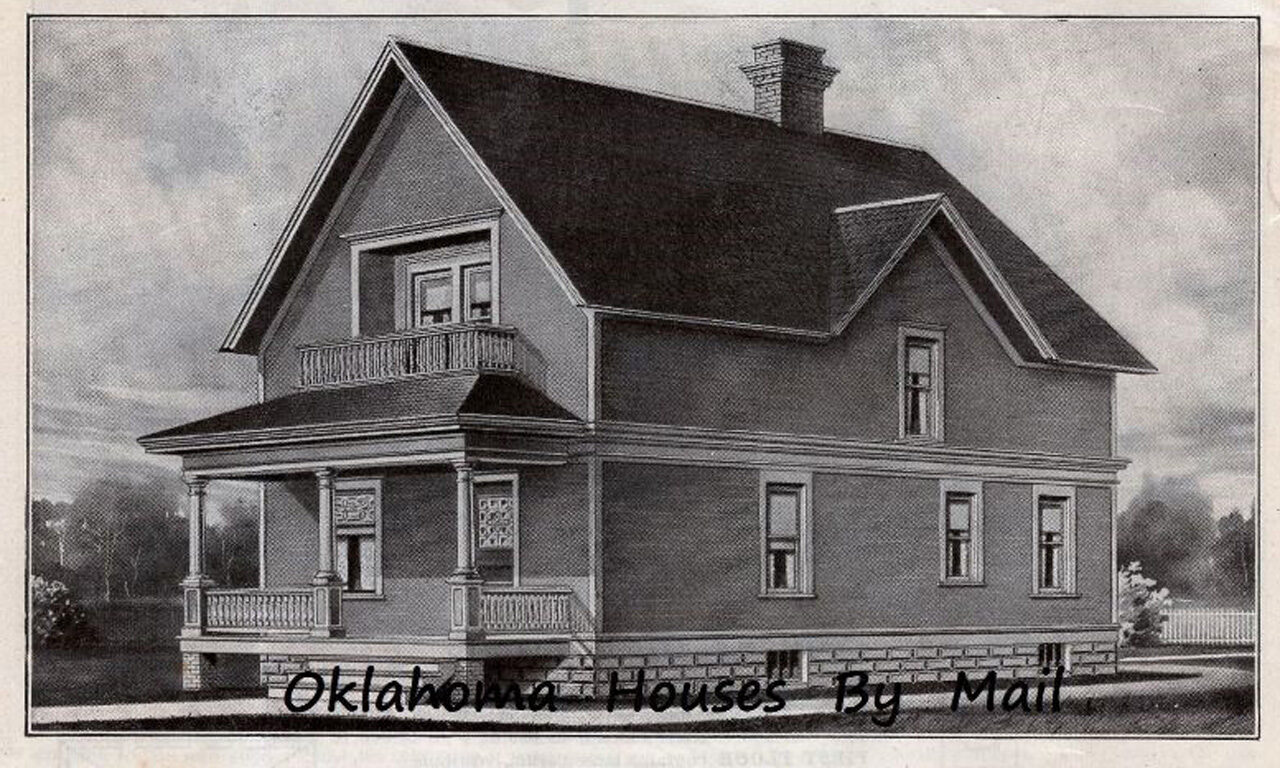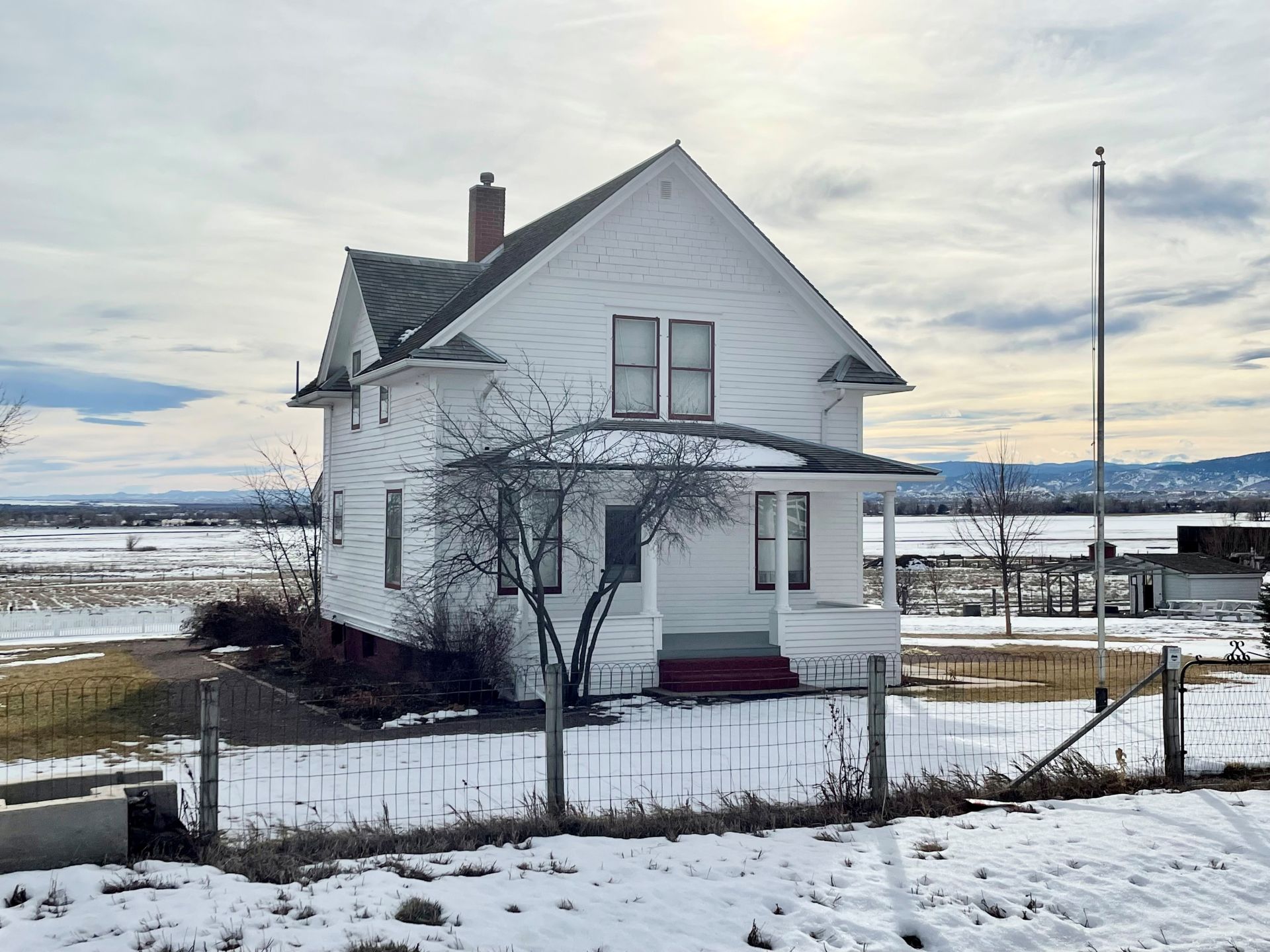Many of you might know that the farmhouse at the Agricultural Heritage Center in Longmont is a Sears & Roebuck kit house.
Although not an exact match for any one house in the company’s 40-page catalog, “Book of Modern Homes and Building Plans,” it is similar to two houses featured in the 1911 through 1913 catalogs.
Back then, customers could make changes to the basic design and that is most likely what the Lohr family did. Every piece of the house was supplied by Sears, most likely delivered to the Longmont railroad station and then transported by truck or wagon to the building site. The only part of the house that the Lohrs would have had to supply locally would have been the foundation. All the wooden elements would have been labeled and instructions on their assembly included.
To anyone who has toured the Lohr farmhouse, it is easy to see that it is made of high-quality wood, materials, and fixtures. Sears sold the kit homes from 1908 to 1940.
The Beginning of Kit Homes
Before 1908, Sears had a building materials department that was hard to keep organized and lost the company money. Richard Sears gave the head of the tableware department, Frank Kushel, the job of getting rid of this unprofitable department. Kushel came up with the idea of changing the way items were sold: to combine them into one package from wood to shingles to nails and screws and ship them to the nearest railroad station. Richard Sears was so taken by the idea that he created the first house catalog.
Sears wasn’t the first company to offer kits. The North American Construction Company (eventually named Aladdin Houses) also did. Montgomery Ward, Sears’ main competitor, offered its own version until 1918.
Fair Financing
In 1911, around the same time the Lohrs purchased their kit, Sears began offering financing for the houses; we don’t know if the Lohrs took advantage of financing or not. The terms were simple: 25 percent down on the house and lot and 6 percent interest over five years. The application asked no questions about race, ethnicity, gender or even finances—unheard of for that time period and for decades to come. The process allowed people to qualify for a home who otherwise might not have been able to do so.
400 home Designs
Sears sold around 100,000 homes, and many still exist today. The store offered nearly 400 designs covering many architectural styles, from simple bungalows to 10-room houses for $6,500. Sears also offered reproductions of Mount Vernon and other historic homes, dabbled in art deco design, and even had a contract with the federal government to build barracks for the Civilian Conservation Corps.
The house kit business peaked in the late 1920s and was strained during the Great Depression. In 1934, Sears stopped financing and selling kits. But after the establishment of the Federal Housing Administration and governmentally insured mortgages, the company resumed just selling houses. Unfortunately, this division of Sears finally stopped in 1940 because of the tens of millions of mortgage defaults and the start of shortages of building materials because of the lead up to World War II.
Price Changes with the Time
Most of the Sears’ houses in high-priced market areas have gained much more value than the standard rate of inflation. A small cottage-type house in Longmont sold in 2019 for $569,000 and a medium-sized bungalow sold in Boulder just before the pandemic for $1.2 million. The people who benefited from the affordable houses offered by Sears back then would not likely be able to afford these kit homes at today’s prices.
Identifying a Kit Home
These tips are from the University of Maryland website, “Kit Homes” page, but many resources are dedicated to kit homes.
- Look for stamped lumber: Sears lumber was marked with a letter and number on the tall side of the lumber and can be found two to 10 inches from the end of the member. “
- Look at plumbing fixtures: When plumbing, electrical, and heating were added to the standard kit house, sometimes the fixtures were stamped with the initials or logo of the company.
- Check the floor plan: Compare the footprint and room sizes to the original manufacturer catalog. Many companies have digitized their catalogs, and they can be found online.
- Look for shipping labels: Inspect the back of millwork (wood molding and trim) for shipping labels.
- Investigate shipping records: Sears’ houses were shipped exclusively by rail.
Visit the Lohr Farmhouse
You can tour the Lohr farmhouse at the Agricultural Heritage Center.
8348 Ute Highway 66, Longmont
Hours: 11 a.m.-5 p.m. Friday, Saturday, and Sunday, April -Oct.




